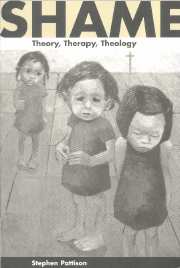Introduction: establishing a theoretical orientation
Published online by Cambridge University Press: 05 June 2012
Summary
The present work is an exercise in interdisciplinary dialogue structured by the notion of pastoral theological ‘conversation’. The first two Parts of it therefore attempt to ‘listen’ to contemporary discourses that contribute to understandings of shame.
The two chapters in Part I, ‘Approaching shame’, will provide theoretical background and orientation to understandings of shame. In contemporary Western society, shame, like guilt, is often thought of as an emotion or an emotional experience. The first chapter, therefore, discusses different concepts of emotion. This shows that emotions can be variously understood. It problematises the hope that a single, clear understanding of shame or any other emotion can be established because there is no monolithic, authoritative understanding of the concept of emotion itself. This is inconvenient from the perspective of trying to create a coherent narrative about shame. However, it may help to establish the integrity of this work. It is concerned to engage in real interdisciplinary dialogue which is faithful to a complex view of reality rather than with opportunistic synthesis.
Chapter 2 problematises the nature and understandings of shame in particular. The concept of shame is to be found in many different contexts and discourses from literature to clinical psychology. The range and instances of this usage and their significance are considered here and a ‘family resemblance’ approach to concepts of shame is suggested. This allows the diversity, pluriformity and incommensurability of different discourses and understandings to be taken seriously while permitting a certain amount of synthesis in the interests of understanding the phenomenology of shame.
- Type
- Chapter
- Information
- ShameTheory, Therapy, Theology, pp. 18 - 20Publisher: Cambridge University PressPrint publication year: 2000



